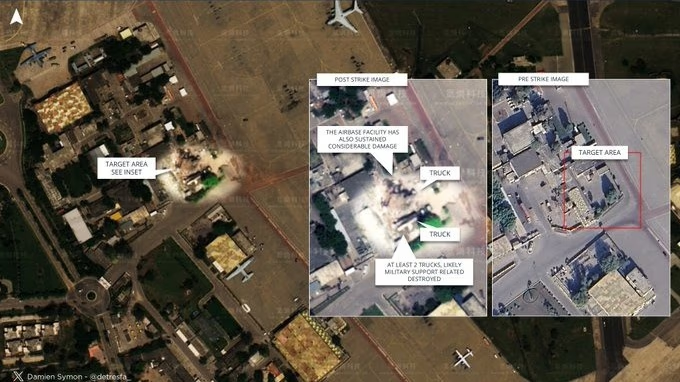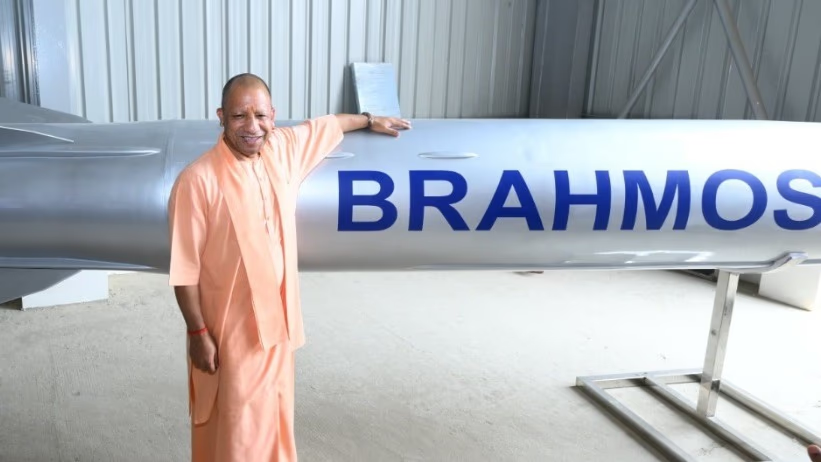Today, the nation is curious to know what India gained from this brief war. The Indian military has repeatedly clarified that it does not favor war, nor was the airstrike an act against any country. India's strikes precisely targeted terrorist centers within Pakistan, resulting in the elimination of terrorists and their leaders. The main objective of the Indian army was to dismantle terrorist camps, and the Pakistani army failed to counter India's offensive completely.
Nine Terrorist Bases Eradicated
India targeted nine terrorist bases, of which four were in Pakistan and five in POK. The Indian army obliterated Jaish-e-Mohammad's headquarters in Bahawalpur, known as 'Markaz Subhan Allah'. The Lashkar headquarters 'Markaz Tayibba' in Muridke was also decimated. In Sialkot, Hizbul Mujahideen's Sarajal and Mehmuna Zoya terror camps were destroyed.
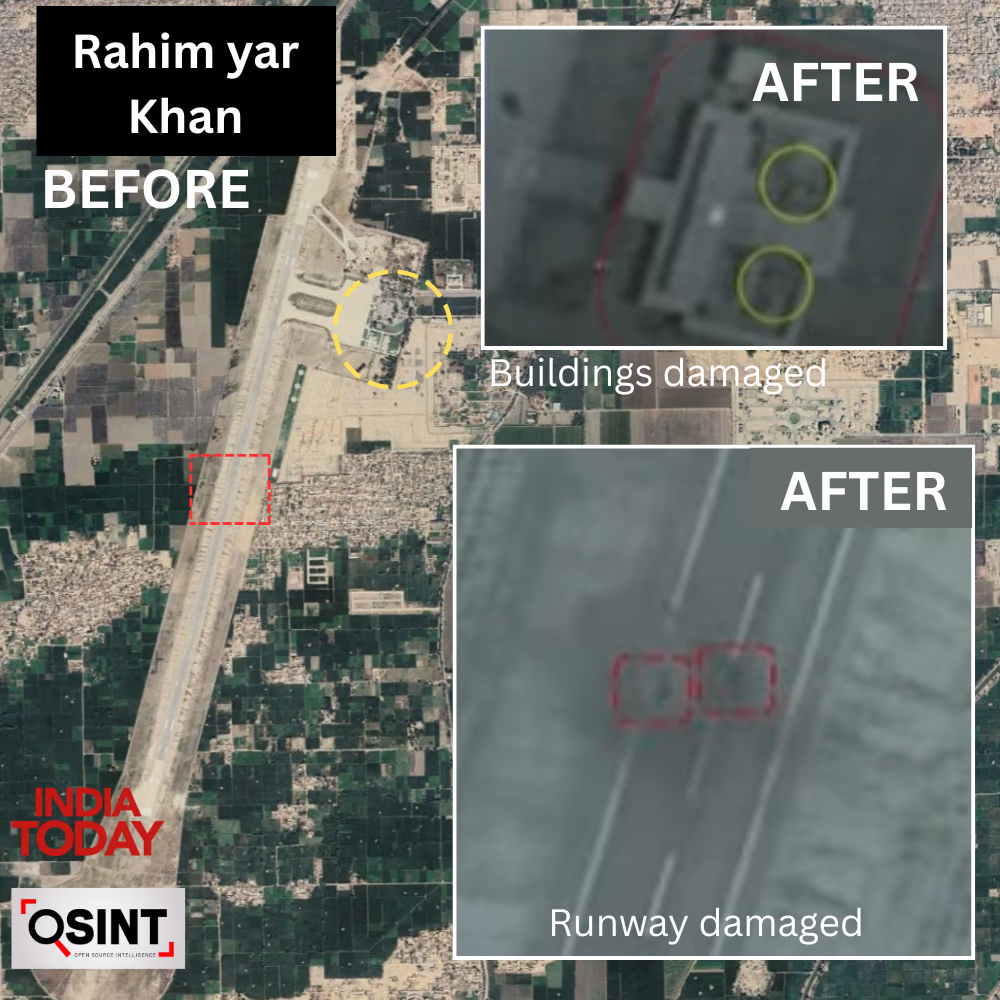
Source: aajtak
Additionally, five terror bases in POK, including Lashkar's Sawai Nala camp in Muzaffarabad and Jaish's Syedna Bilal camp, were annihilated. In Kotli, Lashkar's Gulpur and Abbas camps were destroyed, and the Barnala base in Bhimbar was also erased.
Indian Missiles Wreck Several Airbases
Assessing the situation, it is clear that India successfully targeted and eradicated terrorist sites in Pakistan and POK. Despite Pakistan's lack of silence following these strikes, the Indian military was well-prepared for any retaliatory offenses. Reacting to Pakistan's drone attacks, the Indian military launched a missile strike on 11 military installations, creating chaos within Pakistan. India's targets included previously considered secure military installations, including airbases.
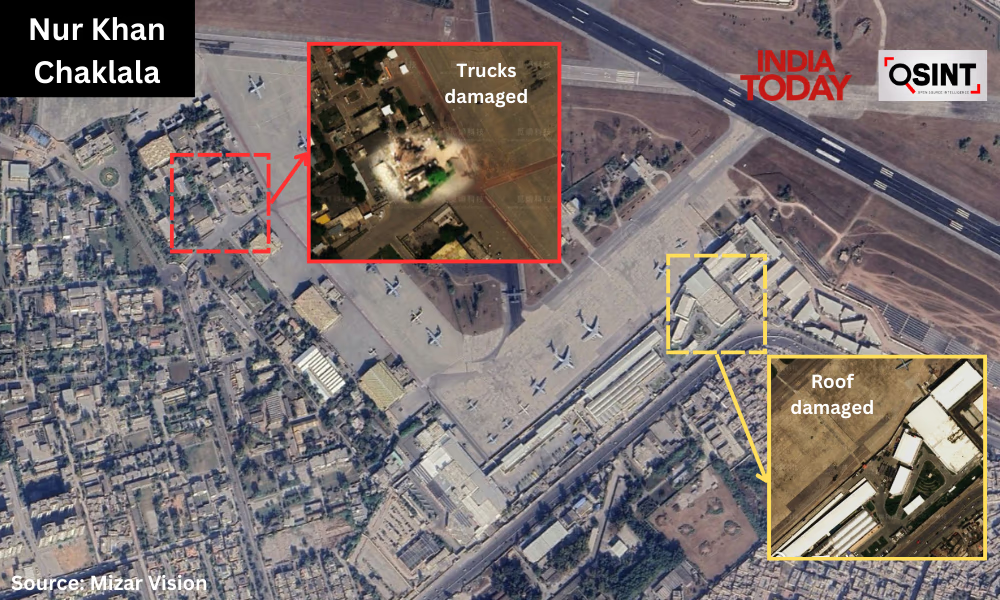
Source: aajtak
Attacks were launched on Nur Khan Airbase, Bholari, Sargodha, Jacobabad, Rafiqi, Murid, Sukkur, Sialkot, Pasrur, Chunian, and Skardu military sites. Recent satellite images reveal the havoc India caused on Pakistan's sensitive airbases.
Signs of Destruction Captured by Satellites
India’s strike on Pakistan's Nur Khan Airbase, or Chaklala Airbase, is vividly apparent in the satellite images showcasing the before and after states of the bombardment. On May 7, India retaliated against terrorist bases, and it was from Chaklala Airbase that Pakistan launched attacks on the Indian Air Force.
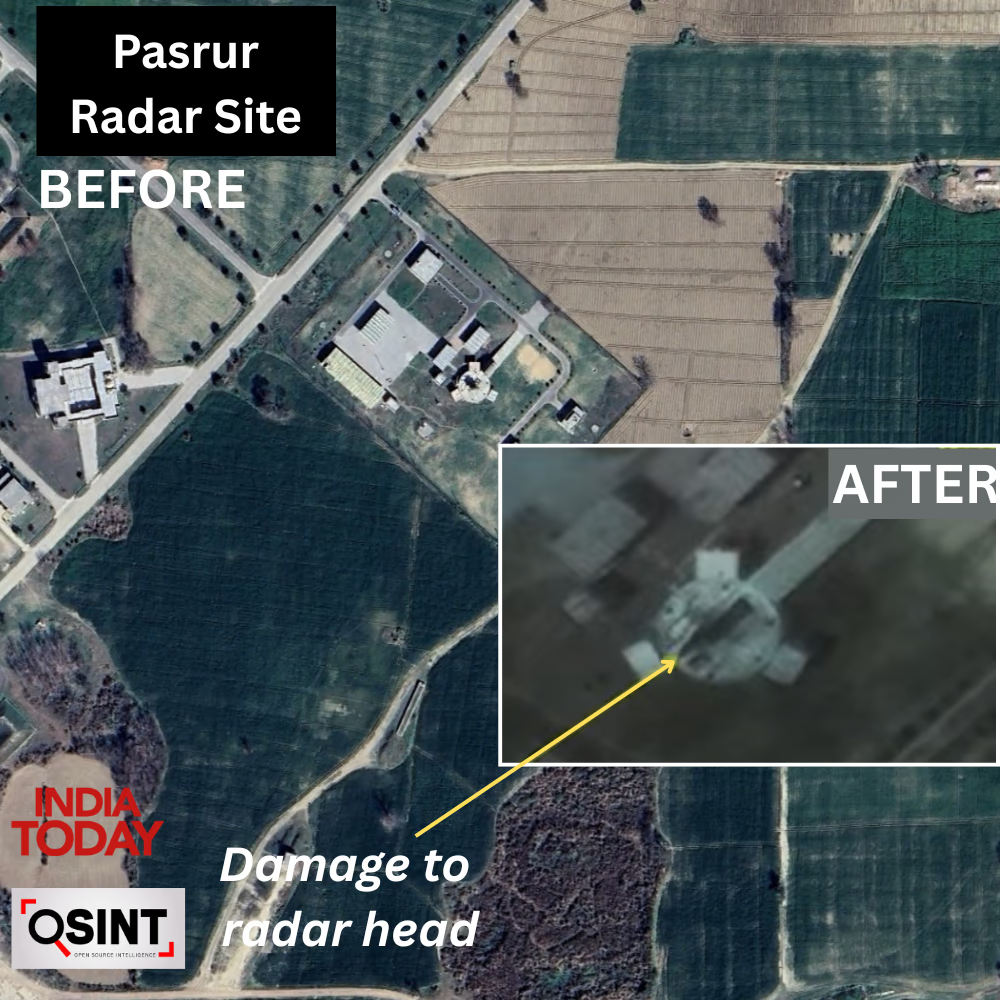
Source: aajtak
Another key target was the Bholari airbase, where India staged significant assaults. The satellite images clearly portray the damages endured by Pakistan’s air capabilities. The Indian military also executed substantial attacks at Sargodha airbase, damaging the Pakistani Air Force's airfield to prevent fighter jets from taking flight. Jacobabad airbase too faced heavy destruction, nearly obliterating its facilities.
America's Intervention for Ceasefire
This robust Indian reprisal drove Pakistan towards America for a plea of protection and ceasefire mediation. India's impactful strikes rattled Pakistan, urging it to seek ceasefire via America's intervention. Pakistan's drone and missile offensives proved ineffective as India capitalized by targeting vital airbases, prompting a desperate outreach to America for a ceasefire.
Individuals inquiring about India's achievements from this conflict can deduce from satellite imagery how significantly Pakistan was impacted, with a ceasefire facilitated by the U.S. The announcement was shared through a social media post by the U.S. President, showcasing both India and Pakistan's agreement to a ceasefire. Many in India dissatisfied with America's involvement question its relevance to Indian security. America, which kept aloof during Pakistan's direct involvement in the Pulwama attack and perpetuated the notion of the Indo-Pak conflict being ancient, abstained from intervention.
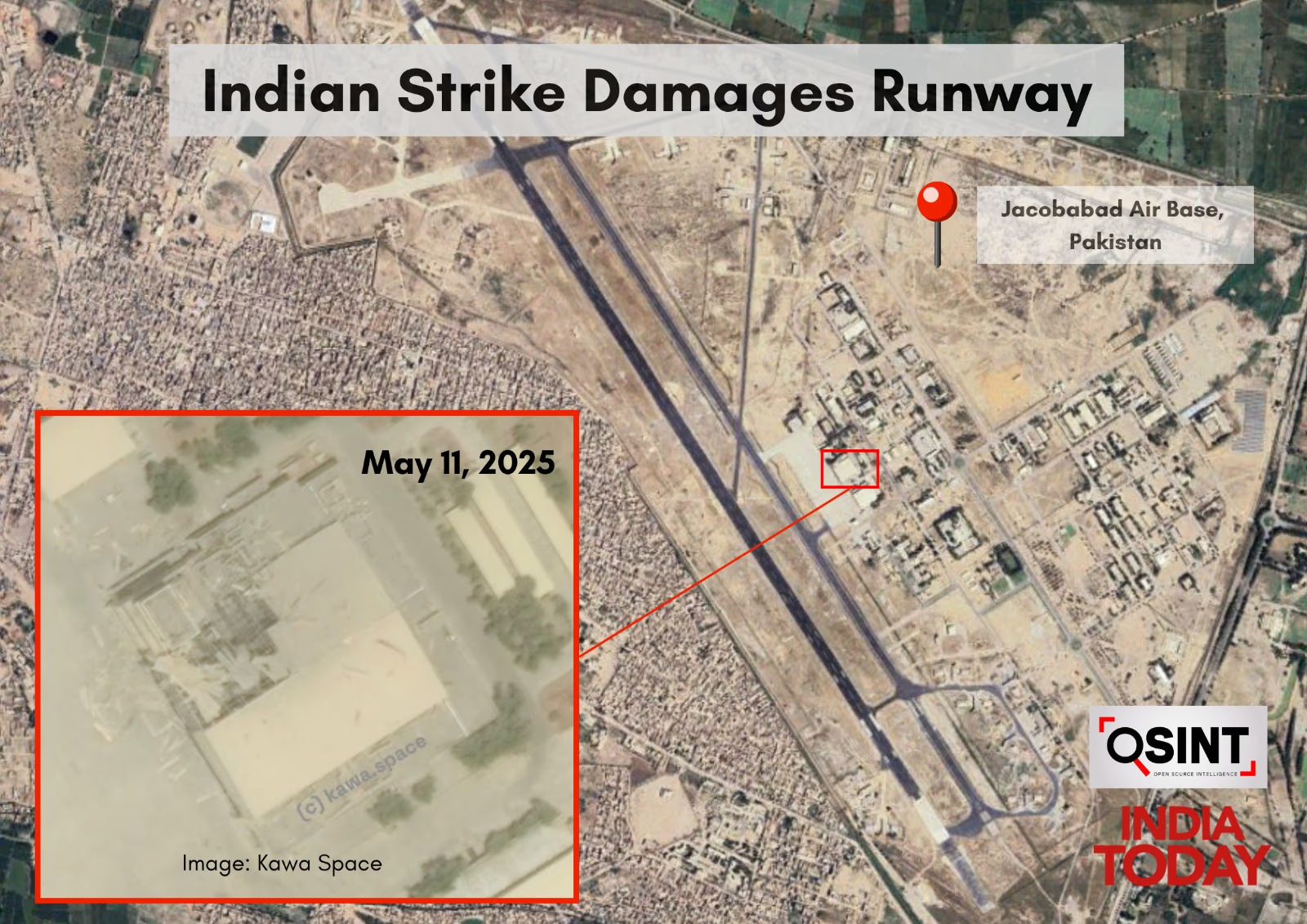
Source: aajtak
Three Lessons for India
First Lesson - 'One who tries to be friends with everyone has no true friends.' This Aristotelian philosophical notion mirrors India's condition, with America, like previous conflicts, maintaining neutrality, promoting ceasefire and trade increase. Turkey, Iran, and China openly supported Pakistan, while Israel and Russia sided with India.
Second Lesson - India now comprehends Pakistan's allies in wartime, knowing which nations may rally against India. Throughout this conflict, Turkey, China, and Iran openly backed Pakistan. Nations, possibly through the IMF, agreed to provide Pakistan economic assistance, with Turkey assisting with drones and false narratives, while Iran remained passive on the Pulwama conflict, proposing mediation instead.
Third Lesson - India realized the need for robust air defense in modern warfare, preparing for Swarm Drone attacks. A Pakistani missile was intercepted approximately 250 kilometers from Delhi in Haryana's Sirsa, signifying the importance of never underestimating an adversary and continually preparing for future confrontations.
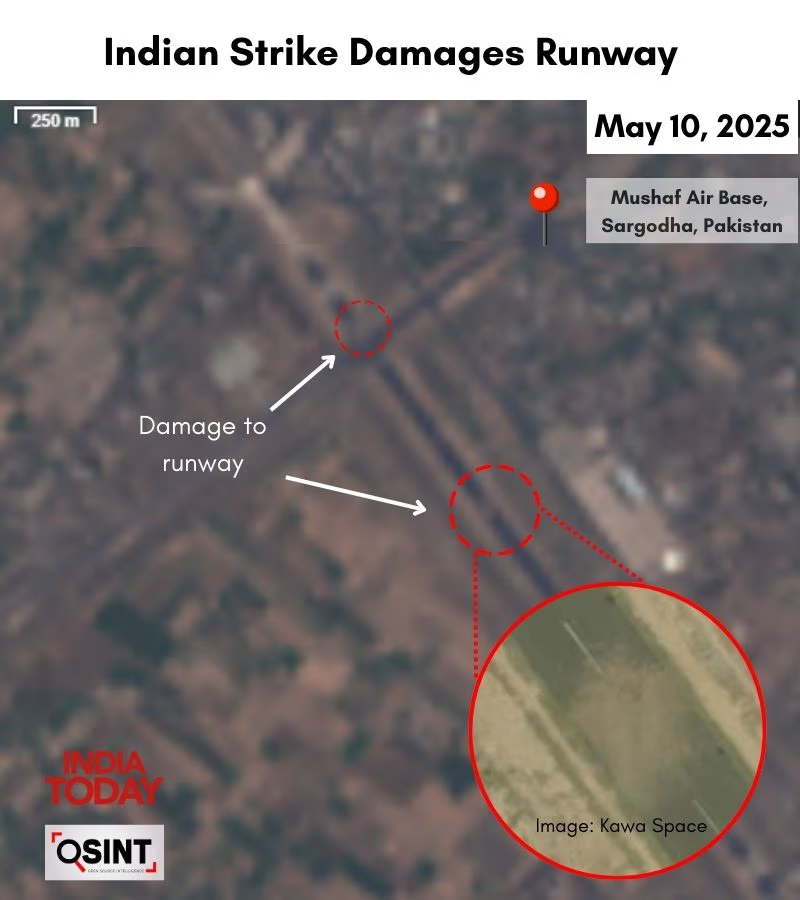
Source: aajtak
Pakistan's Diminishing Role in Diplomacy
Amidst America's intervention in the ceasefire, opposition leaders questioned the government's stance. Post-ceasefire, Pakistan’s political trajectory pivoted anew. The government eventually yielded full control to its military, praising Chief of Army Staff Asim Munir, a necessity driven by Prime Minister Shahbaz Sharif's political predicament. This conspiracy against India was orchestrated by General Asim Munir, leaving Prime Minister Shahbaz Sharif and family as mere puppets. With Sharif distanced from key decisions, speculation has arisen about his political future post-ceasefire, pondering if a leadership transition favoring Bilawal Bhutto aligns more with military preference.
Pakistan's diplomatic stature further declined, with military favoritism towards Bilawal Bhutto due to his anti-India stance. His propaganda against India on Kashmir aligns with military satisfaction.

